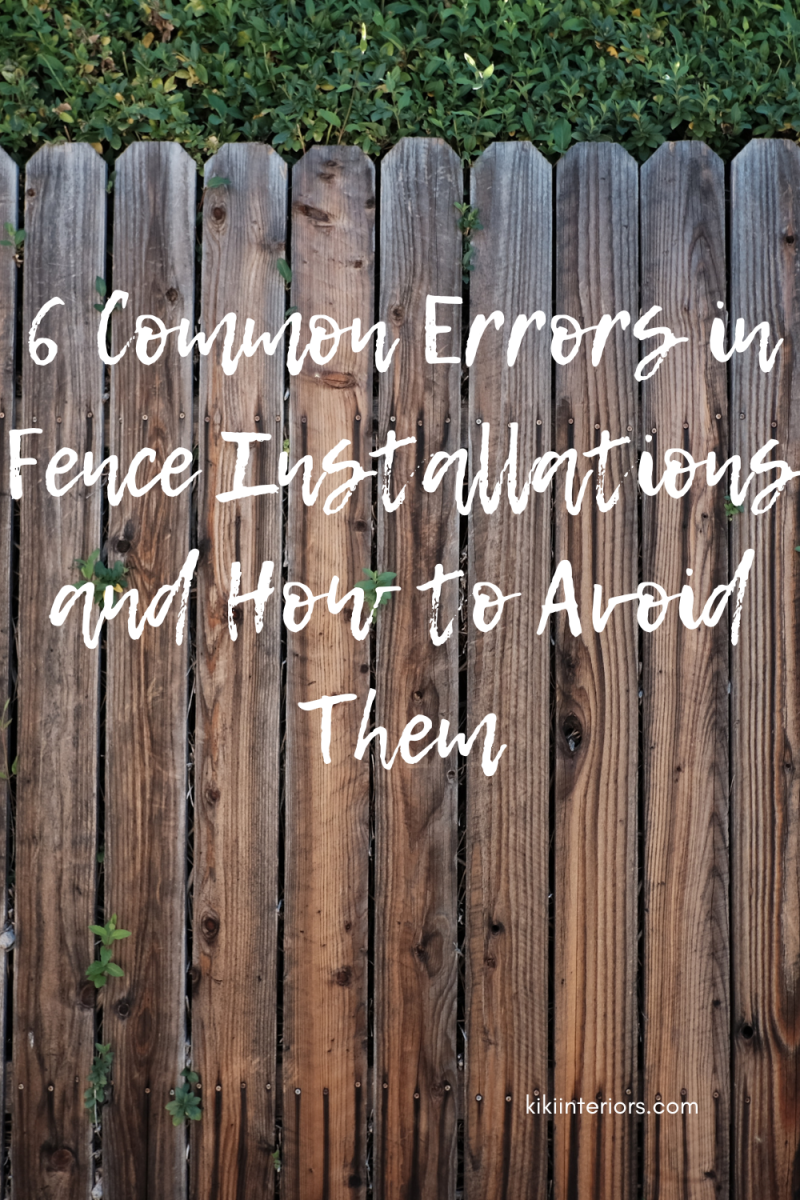
You need a new fence for your yard, but before you make that purchase, you want to know the best fence installation process or practices. Otherwise, you might end up with a fence that doesn’t meet your needs. Or worse, you could put yourself at risk for injury.
Not quite sure how to install a fence the right way? We’ve got all the information you need to know! Keep reading for six common errors in fence installations and how you can steer clear of them.
Let’s get you started!
1. Inaccurate Measurement and Layout
Accurate measurements and layout are crucial for successful fence installations. Follow the steps twice and measure the posts twice before cutting to avoid problems. Closed posts can cause sagging, while far-apart posts cause low fences and need more materials.
Incorrect railing layouts can cause weak, unstable structures and hanging gates. Using tools like chalk lines, laser levels, and utility squares ensures accuracy and prevents costly repairs.
2. Inappropriate Use of Nails and Screws for Attachment
When installing or replacing old fences, it’s crucial to use appropriate hardware for securing components. Nails and screws are commonly used, but improper use can weaken the structure.
Common errors include improper size and spacing. Small nails can cause breakage, while long screws can cause over-torquing. To avoid issues, use proper nails and screws and space according to the manufacturer’s instructions.
3. Picking the Wrong Fencing Structure and Material
When selecting different fence materials, it’s crucial to consider the space’s individual needs. It includes durability, ease of use, aesthetic value, insulation, and budget. Choose materials that can withstand the elements and provide safety and security.
Flimsy or inadequate materials can cause costly repairs or replacements. Research and consult experts to avoid mistakes. Also, ensure quality, compatibility with terrain, and long-lasting applications.
4. Not Following the Necessary Building Permits and Regulations
Common errors in fence installation include not following building permits and regulations. Failure to get permits can lead to fines and the tearing down of the fence.
To avoid these errors, get the necessary paperwork and follow safety regulations. Research local ordinances and consult a building official if unsure. Hire fence contractors knowledgeable about regulations to avoid fence installation errors.
5. Neglecting Post Installation Maintenance and Protection
A common error in fence installation is not providing regular fence maintenance and protection. It is crucial to check for rust, loose posts, and other damages. If the fence is not maintained, then it is likely that it will decay and no longer provide your desired level of protection and security.
To prevent this, paint and seal the fence regularly and ensure that you check for any signs of damage. If there are any broken or loose posts, replace them right away.
6. Inexperienced DIYers
Inexperienced DIYers often make common mistakes when installing a fence on their own. Some of the most common errors include improper post spacing and failing to dig post holes deep enough.
To avoid these mistakes, it is important to seek professional help when measuring. Using a metal detector to locate underground pipes and wires for safety and to prevent property damage.
Learn More About Errors in Fence Installations and How to Avoid Them
Common errors in fence installations can ruin the look and quality of the fence. With adequate preparation, appropriate materials, and careful work, you can have a pleasing and sturdy fence that can last for years. With the help of a qualified fence expert, you can ensure correct installation and prevent errors by keeping your eyes open and ensuring proper fence maintenance.
Did you find this article helpful? Check out the rest of our blogs!




